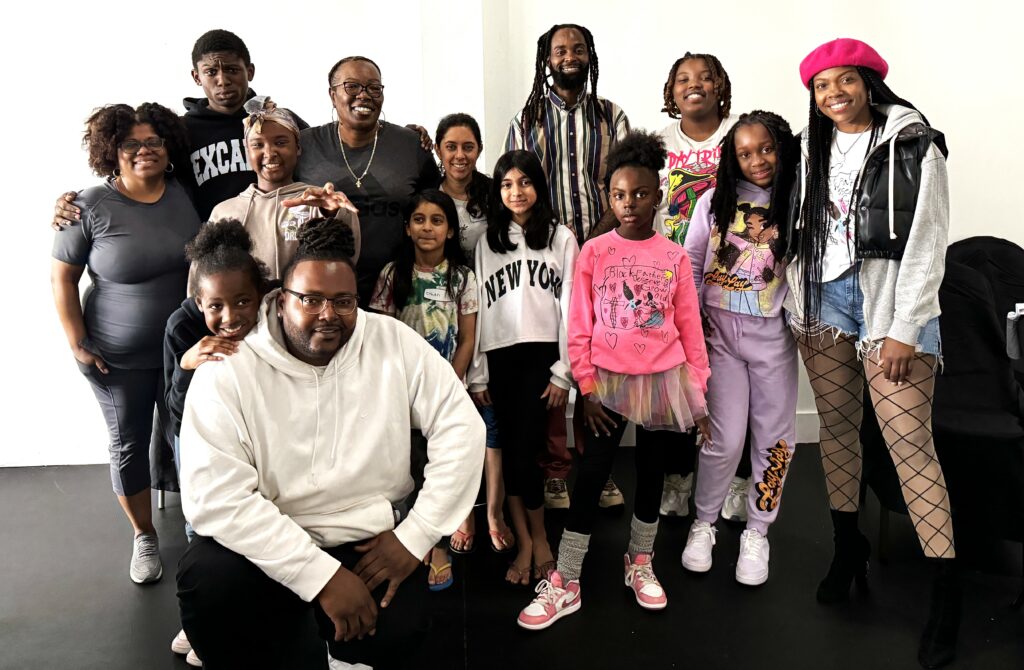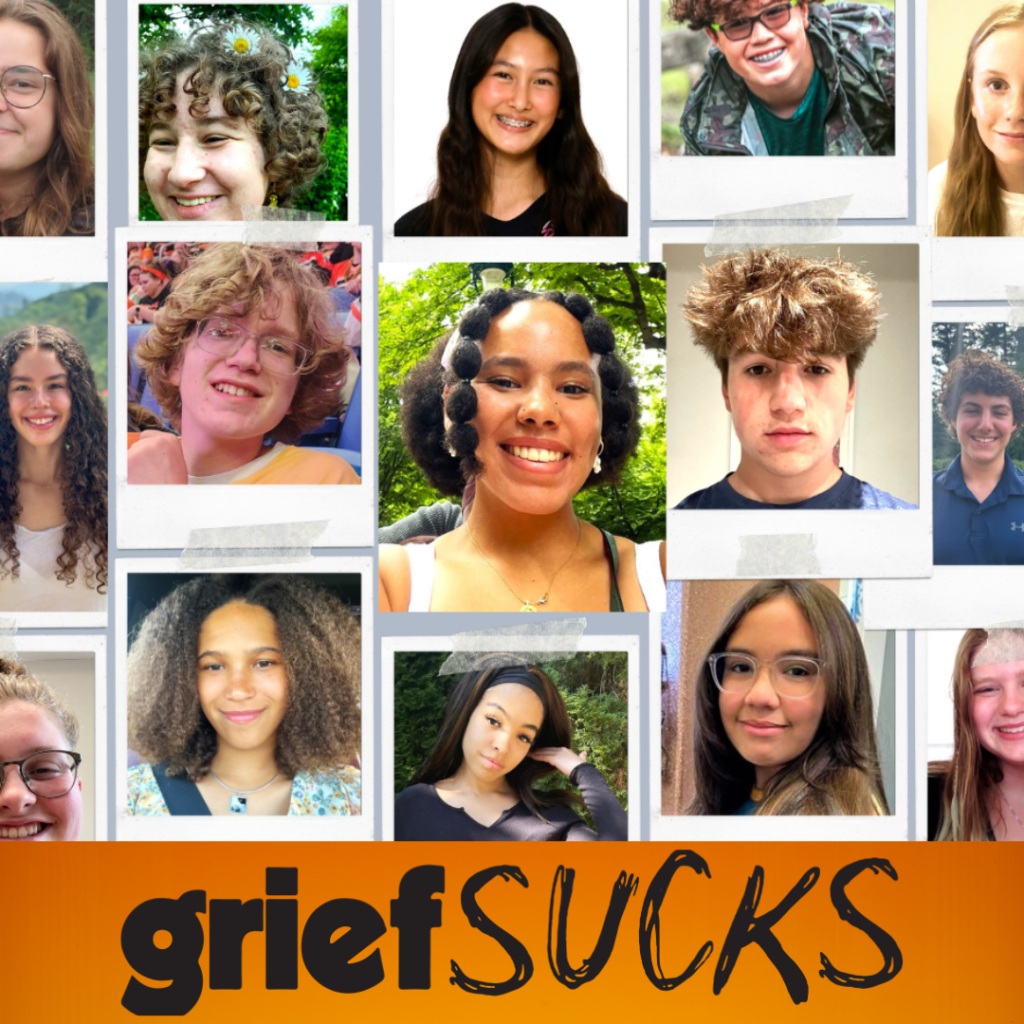Each June, we share our annual DEI and anti-racism update. It’s an opportunity to reflect on the past year and steps we’ve taken to increase diversity in our community. It’s an important way to ensure that we are creating a more equitable culture and fostering a stronger sense of inclusion and belonging.
Starting with camp…
One of our goals is to expand our camp reach to more kids in under-resourced communities. We strive to increase equity and accessibility for Black and Brown campers by increasing our recruitment efforts for campers and volunteers of color.
To that end, we opened our new camp program in Maryland last summer (see picture on top of blog post), which allowed us to serve communities deeply in need of more grief support. This includes those in the D.C. and Baltimore area. We welcomed 77 campers (74% were campers of color) and 61 staff and volunteers (49% were volunteers of color).
We also ran a series of in-person “Playing through Grief” events that 1) introduced families to the opportunity of our overnight camp programs, and 2) provided grieving kids an opportunity to learn how to navigate their feelings, build coping skills, and play with other grieving children. These free workshops allow us to build relationships with local partners that expand our reach to under-resourced communities including Baltimore, Washington D.C., and Atlanta.

At our Playing through Grief event in Atlanta, kids made T-shirts and shared about grief with Mia Jaye, CEO of Black Men Deserve to Grow Old.
How we did with reaching our goal
Last year, we set a goal of 500 campers of color (40% across all programs) in order to drive our recruitment efforts. Across our programs collectively, we still have some work to do. We enrolled 438 campers of color, 38% of our campers, falling just shy of our ambitious goal.
Some barriers we found to meeting our goal: getting enrollment information directly to families in underserved communities in the fall and getting those applications completed from caregivers before bunk spots fill up (which has been an issue). We are continuing to allocate more resources to support our families in completing the application process and getting campers on board.
Another area of focus is to increase our volunteer and staff representation of different identity groups. We are continuing to build partnerships and trusted relationships with agencies and organizations in the communities from which our campers are coming in order to build a volunteer pipeline that represents different experiences and demographics. We also launched an Emerging Leaders program this year to prepare volunteers with the potential and interest to step into future leadership roles at camp.
We shared insights about the racial grief gap.
We made it a priority to discuss publicly the gap in grief when it comes to race: Data shows that Black and Brown children are disproportionately impacted by grief: They are 2X more likely to have a father die and 3X more likely to have a mother die compared to White children. Indigenous children lost caregivers at rates of nearly four times the rate of White children.
This year, we shared insights about this gap with our partner, Sesame Street Foundation, along with how to incorporate this information into their new grief initiative “Growing as We Grieve.” We talked about the gap on WURD radio in Philadelphia, the Mental Health Entrepreneur Group Podcast, the Culmination Point on IG live, the “Grief Plus” Podcast, and on a panel titled “Grief and Identity: Navigating Black Bereavement in America” at the 45th Annual Association for Death Education and Counseling conference.
This year, our Chief Clinical Officer, Brie Overton, spoke to 150 students at the University of Puerto Rico at ARECIBO about grief, and why it’s important that the Latino community learn to speak more openly about their grief and have more resources to use.
For Mother’s Day, we shared insights on how Black women experience grief differently. We shared from one of our grief specialists why grief language is not embedded into the Latino culture and how to change this.
We continue to recruit a diverse Youth Advisory Board
Our Youth Advisory Board is made up of pre-teen and teen campers of various races and ethnic backgrounds. Each month, they share with us and our community insights on camp, ideas on new program initiatives, and their personal reflections on grieving. This allows us to hear the wide variety of voices of the young people we serve and continue learning how best to support and empower them.

We are committed to ensuring that our Youth Advisory Board remains diverse.
Continuing DEI training for staff and volunteers
We continue to provide our two-part mandatory training “Conversation Forward,” in which we teach volunteers how to understand and handle implicit bias (a negative attitude, of which one is not consciously aware) and microaggressions that might occur at camp. Additionally, we provide the training “Understanding the Impact of Trauma” by the Wendt Center in D.C. to inform and raise awareness of the trauma that many of our campers experience due to deaths and other adverse conditions in their families and communities.
We are also determined to make camp as safe and inclusive as possible for the LGBQTIA+ community. In addition to continuing to provide the mandatory “LGBQTIA+, Gender-Expansive Camper Training” for volunteers and staff, we are partnering with TQAMP, an organization that supports camps to become spaces of belonging for all people, for consultation on what standards we can put in place to ensure we’re creating an inclusive and safe space for our LGBQTIA+ campers and volunteers.
Keeping diversity a priority
Moving forward, we will continue to make diversity a high priority. We will do this by asking questions and listening to the community we serve, as well as to experts in the DEI space. We will seek new ways to build relationships with families in under-resourced communities, and we’ll stay focused on recruiting kids, volunteers, and staff of color across all of our programs.
